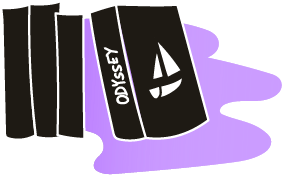Title of the resource
Title of the resource in english
Publisher
Oxford University Press
Original language
Target and Age Group
Highs school students, homeschoolers, teachers
Author of the Entry:
Alessia Borriello, Bologna University, alessia.borriello2@studio.unibo.it
Peer-reviewer of the Entry:
Elżbieta Olechowska, University of Warsaw, elzbieta.olechowska@gmail.com
Second Peer-reviewer of the Entry:
Lisa Maurice, Bar-Ilan University, lisa.maurice@biu.ac.il
Maurice Balme
Maurice Balme (22 October 1925 – 7 December 2012) was an English classicist who since his early years of activity worked to revolutionize the teaching the classical languages, which at that time were taught according to conservative Victorian teaching methods. He first wrote a book entitled Aestimanda (“Up for discussion”), together with one of his Harrow colleagues, Mark Warman, in spite of the 1990 Cambridge and Oxford decisions to drop Latin as a requirement for admission. In Cambridge, he broke new ground with the method of learning Latin through reading stories in that language. He could write in a fluently in Latin both prose and poetry.
His most famous textbook, Athenaze, has now gone through three different editions and is known worldwide.
Source: telegraph.co.uk
Gilbert Lawall
From people.umass.edu:
“Gilbert W. Lawall is a Classics Professor Emeritus at the University of Massachusetts. He earned his B.A. at Oberlin College in 1957 and his Ph.D. at Yale University in 1961. Research interests: Greek and Latin poetry, Hellenistic Greek poetry and its influence on Latin poetry, Senecan drama, and Greek and Latin pedagogy.”
James Morwood
James Henry Weldon Morwood (25 November 1943 – 10 September 2017) was a classicist and a Fellow of Wadham College, Oxford University. He has been ahead of his time in the teaching of classics. As a scholar, he was most interested in Latin poetry and Greek drama. He either wrote or co-authored more than 20 textbooks and books. To mention some, he co-authored The Oxford Latin Course with Maurice Balme and he revised the third edition of Athenaze, the Ancient Greek course by Maurice Balme and Gilbert W. Lawall. He worked for Oxford University Press and published the Oxford World’s Classics Euripides series, for which he provided new translations of all the 19 plays.
Source: en.wikipedia.org,
theguardian.com
Contents & Purpose
The textbook provides a narration of the story of an Athenian farmer named Diceopolis and his family. They live in a village called Cholleidae, situated in Attica, north of Athens. The story is fictional, albeit the facts are set in a specific historical context which runs from the autumn of 432 to the spring of 431. Thus, the plot develops through some crucial historical patterns of the time, such as the Athenian democracy led by Pericles and the tensions caused by the growing fear and envy of the other Greek power of the time, Sparta.
The main story follows Diceopolis and his simple family life in the 5th century BC, though it is interwoven with mythological themes and accounts of battles fought during the Persian wars.
Chapters 1 to 5 explore life in the countryside; chapters 6 to 7 contain a mythological subplot which begins with the story of Theseus and the Minotaur and ends with Odysseus and the Cyclops, and goes on to include brief excerpts of tales from the Odyssey. In chapter 8 the main narrative continues with Diceopolis and his family arriving in Athens for a festival. Chapter 10 connects the story with the great battles of the Persian Wars, following a misfortune suffered by the family and which is not resolved until chapter 20 of Book II. At the end of the textbook, the fate of the family of Diceopolis is affected by the Peloponnesian War.
The aim of the course is to enable students to read ancient Greek “as quickly, thoroughly and enjoyably as possible”, as announced in the introduction. The readings start with simple content and grammar and become progressively more complex following the students’ growing command of grammar and vocabulary. The traditional method of introducing grammar is modified, as grammatical issues are briefly explained first next to the paragraphs and then more in depth in an Enchirìdion (grammar “manual”) at the end of each chapter. These appendices provide a clear point by point explanation of morphology and syntax from the readings. Gradually, a new vocabulary is introduced, both through glosses beneath each paragraph and through a list of new words at the beginning of the chapter, meant to be learned from Greek to English and from English to Greek. There are also illustrations which help in understanding the plot and memorizing the words and sentences. The delivery itself is purposely repetitive in order to help the student learn grammar and lexical structures, passing from an entirely paratactic to a more hypotactic textual structure.
Reference is also made to some basic notions of historical grammar. At the end of the chapters, there is an exercise section and a concluding part about Greek culture and customs, geared towards shortening the temporal distance between students and the life and the world of ancient Greeks.
The main fictional story line serves the didactic purpose of the book. The subplots of mythical narratives are mostly based on Homer, Herodotus, and Thucydides and each subsequent text is closer to the ancient Greek original. Excerpts from Bacchylides and Aristophanes are shortened but otherwise untouched. The events of the Peloponnesian War are taken from the accounts of the Greek historian Thucydides. There are also passages from a wide variety of classical Greek authors, as well as from the New Testament and from sayings of the seven wise men of Archaic Greece.


